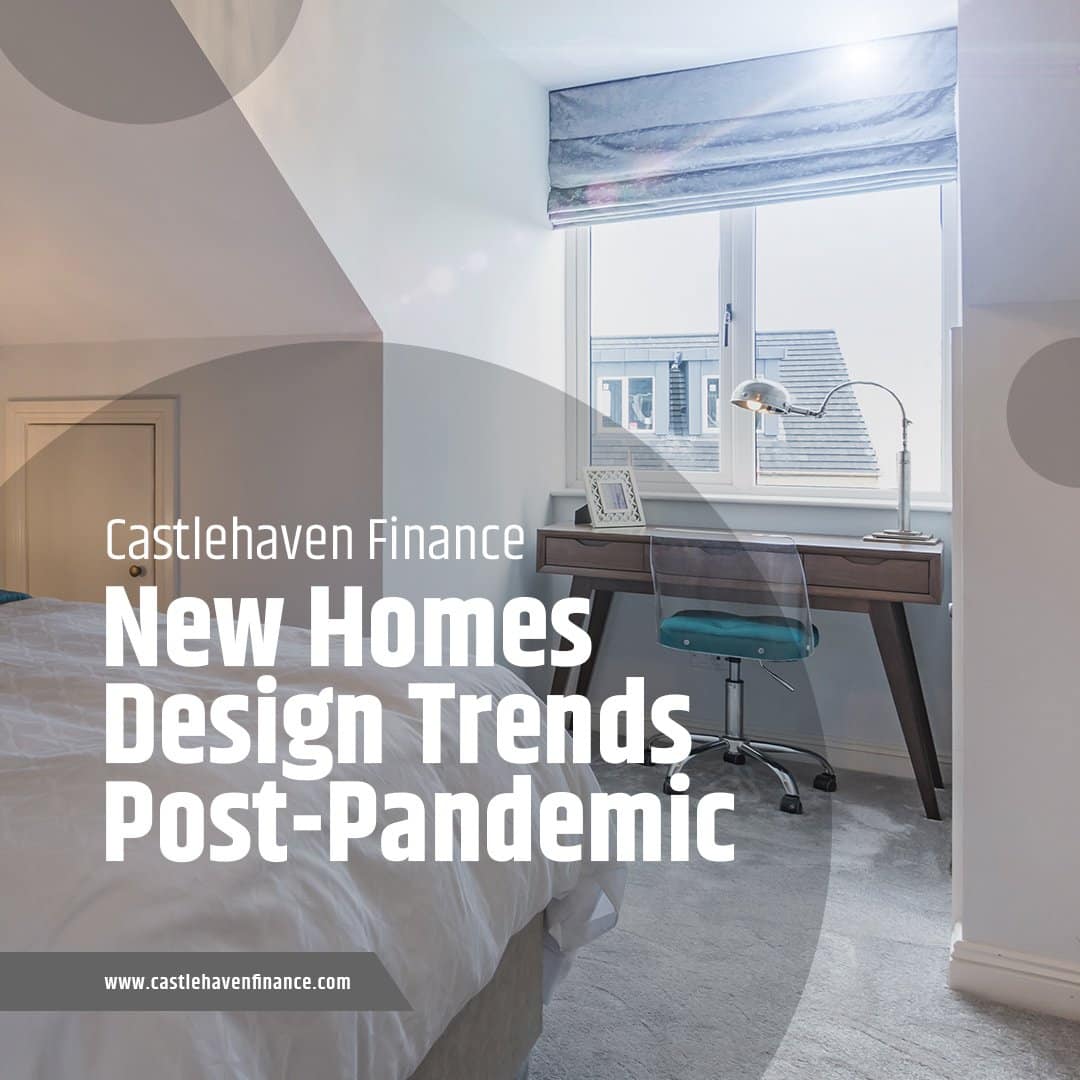New Homes Design Trends Post-Pandemic
For most people, the lockdowns of 2020 and 2021 were seen as unwelcome necessities that saw families and couples spending more time together than ever, and singletons getting more acquainted with their home than perhaps they might have wished to. Now, with the worst of the pandemic behind us (hopefully), we are beginning to see that home design may be forever changed by the past couple of years’ upheaval, with a changed demand for spaces that suit new behaviours and family habits.
One silver lining to emerge from this tumultuous period has been the emergence of remote and hybrid working. Many have found that, far from being a temporary inconvenience, working from home full-time or a few days a week offers some distinct advantages, notably in terms of time and cost. Now, with Ireland introducing legislation to give workers the right to request to work remotely – on top of 30 percent of workers (https://www.thetimes.co.uk/article/no-more-remote-working-then-i-quit-say-30-of-employees-vm0xt95pd) demanding remote working from their employers – the role of the home is no longer simply somewhere to recover after work.
Instead, homes are beginning to be looked at in a considerably different light. With remote working looking to be a permanent feature of many people’s lives, the idea of leaning over the coffee table for Zoom meetings for the foreseeable is less than ideal. Instead, dedicated home office spaces are now almost a necessity for a lot of new home buyers. These spaces allow for a clear separation between work and home life, something many remote workers felt was lacking over the pandemic. Being able to shut the door at the start and end of a work day means not only improved productivity but also better quality private lives.
And it is not just remote workers looking for dedicated rooms. Those furloughed and stuck at home during the pandemic also found the need to stimulate their minds and bodies within the confines of their homes. Many found themselves converting box rooms and under-utilized spaces to become reading nooks, home gyms, gaming rooms, yoga spaces, and even learning spaces for children. Space flexibility is fast becoming one of the main requirements for home buyers, with semi-divided rooms and floor plans that can be adjusted through adjustable partition walls seen as especially useful.
And while open plan design is still considered desirable in kitchen and living areas, there is now a growing need for privacy within homes. In situations where parents, partners, and even children are all at home working or going about their lives, an open plan layout fails to give adequate solitude necessary for general wellbeing. Introducing smaller rooms, but with an overall larger footprint is one solution, allowing open plan central areas for together time with enough individual rooms for privacy, work, and play.
A downside that some remote workers have reported, however, is that not having to commute or go out for lunch means far less time spent outdoors. While this can be counteracted through gaining more leisure time and not having to bookend a day with rush hour traffic, new home design trends are helping to alleviate this somewhat through increased use of glass. As a relatively sustainable material, too, floor-to-ceiling glass windows and doors are opening up our indoor spaces to make them feel bigger, airier, and a lot brighter. Glass is also helping to make new houses healthier buildings, improving the wellbeing of occupants with natural light having marked health benefits over the use of LED, incandescent, or fluorescent lighting.
And this blending of the outdoor and indoor spaces is something that is also reflected with an increased demand for covered and uncovered patio and novel outdoor areas. These are used for both socialising and taking five minutes out from work. Placemaking closer to home areas is now an area of considerable interest looking to improve the local areas of former commuters. But, the need for dedicated outdoor spaces, connected to properties directly is something that can be utilized by workers throughout their workday, even working outdoors weather permitting.
Another consequence of people using their homes for more than just recreation is an increased expectation of bathrooms. With potentially more people at home for longer periods of time, there is often a need for more amenities. Some new homes are now meeting this demand with larger family bathrooms accompanied by one or two ‘powder rooms’ with a toilet, sink, and possibly a shower to accommodate more occupants at the same time.
While it is still early days for the technology and concept as a whole, the idea of metaverse rooms is also now beginning to form in the minds of home buyers and builders alike. Should the metaverse prove to be the next big thing, it could revolutionise both work and home behaviours. While users will be able to connect to the metaverse through laptops and screen devices, there is good reason to believe virtual and augmented reality will play a large part too. This means open rooms or flexible spaces could become a mainstay of the home of the future. With the metaverse still far from becoming a reality, however, home buyers are not yet adding a ‘metaverse room’ to their list of requirements, but it is a consideration for the future of the industry.
With offices in Dublin and Cork, Castlehaven Finance has provided development finance for both private and social housing to developers, builders and project owners across Ireland in excess of €1.7 billion (200+ loans) since 2014. Speak to the Castlehaven Finance team about your next commercial or residential development project https://www.castlehavenfinance.com/contact
